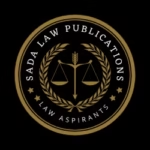The Supreme Court permits the petitioner to get involved in ongoing proceedings but rejects another petition contesting the Places of Worship Act.
Trending Today The Supreme Court permits the petitioner to get involved in ongoing proceedings but rejects another petition contesting the Places of Worship Act. Punjab & Haryana High Court: Child in Womb During Accident Is Subject To Reimbursement Under MV Act What it implies signifies Sam Altman claims that OpenAI’s GPUs are “melting” over Ghibli-style AI art Soldiers brave icy winds while we sip on hot cappuccinos: Delhi High Court slams denial of disability pension: Gurminder Singh, Punjab Advocate General, Steps Down Over 3 Crore Cases Disposed of in First National Lok Adalat of 2025; Settlement Value Crosses ₹18,212 Crore AN ANALYSIS OF THE ROLE OF CSR IN THE COMPANIES ACT 2013 On April 14, the center announces a day off in honor of Ambedkar’s birthday anniversary. The Supreme Court requires a preliminary investigation before filing a formal complaint for some speech and expression-related offenses. Orissa High Court Fines Woman Who Sought Pet Dog’s Custody From Daughter-In-Law After Dowry Dispute The Supreme Court permits the petitioner to get involved in ongoing proceedings but rejects another petition contesting the Places of Worship Act. MAHI SINHA 02 Apr 2025 Update: 02 Apr 2025 NITIN UPADHYAY …………….PetitionerVsUNION OF INDIA AND ORS …………Respondent Today the Supreme Court of India declined to consider a writ petition contesting the legality of Section 4(2) of the Places of Worship Act, 1991, which states that any legal actions pertaining to a place of worship’s religious character that are started prior to August 15, 1947, will end on the Act’s effective date. However, the petitioner was given permission by the court to submit a request in the ongoing challenge to the Act, which is titled Ashwini Kumar Upadhyay v. Union of India. Notably, a number of petitions challenging the legality of the Places of Worship Act, 1991 have already been brought before the Court. On December 12, a bench made up of Justices PV Sanjay Kumar, KV Viswanathan, and Chief Justice of India Sanjiv Khanna issued a landmark ruling prohibiting new lawsuits and survey orders against religious places. At the beginning, the CJI Sanjiv Khanna and Justice Sanjay Kumar bench stated that the current plea was identical to the ongoing challenge. The CJI replied, “This is the same plea, what is the difference?” Nevertheless, the lawyer for the petitioner pleaded with the court to accept it for hearing and include it in the current batch. He further stated, “There is a subtle difference in what is being said, I’ll address the Court.” The Bench declared, “We are not inclined to interfere in the present petition under Article 32 of the Constitution,” declining to consider the case further. Under the currently ongoing challenge, the applicant was given the freedom to file an application. Notably, the Court ruled on December 12 during the hearing of the ongoing case that courts should refrain from issuing enforceable interim or final rulings, including examination orders, in continuing challenges (such as those involving Gyanvapi Mosque, Mathura Shahi Idgah, Sambhal Jama Masjid, etc.). While considering a number of petitions contesting the Places of Worship (Special Provisions) Act, 1991, and one requesting the Act’s execution, the interim ruling was issued. S.4(2) – Why Was This Section Challenged? The petition specifically challenges S.4(2) of the Places of Worship Act, 1991, which specifies that if, at the time this Act is enacted, any suit, appeal, or other proceeding pertaining to the alteration of the religious nature of any place of worship that existed on August 15, 1947, is still pending before any court, tribunal, or other governing body, it will cease to exist, and no suit, appeal, or other proceeding pertaining to any such issue shall lie on or after such beginning in any court, tribunal, or other authority: As long as any lawsuit, appeal, or other action brought on the grounds that a religious conversion occurred in a particular location after August 15, 1947, is still pending at the time this Act goes into effect, it will be resolved in line with subsection (1). According to S.4(1), a house of worship that was established on August 15, 1947, shall maintain its religious identity as of that day. Among other things, Section 4(2) of the Act has been contested on the grounds that it infringed upon fundamental rights guaranteed by Articles 25, 26, and 29 of the Constitution of India by violating the right to reclaim deity-owned property that has been wrongfully taken by other communities. Leave a Reply Cancel Reply Logged in as sadalawpublications@gmail.com. Edit your profile. Log out? Required fields are marked * Message* Live Cases The Supreme Court permits the petitioner to get involved in ongoing proceedings but rejects another petition contesting the Places of Worship Act. The Supreme Court permits the petitioner to get involved in ongoing proceedings but rejects another petition contesting the Places of Worship Act. sadalawpublications@gmail.com • April 2, 2025 • Live cases • No Comments Punjab & Haryana High Court: Child in Womb During Accident Is Subject To Reimbursement Under MV Act Punjab & Haryana High Court: Child in Womb During Accident Is Subject To Reimbursement Under MV Act sadalawpublications@gmail.com • April 2, 2025 • Live cases • No Comments What it implies signifies Sam Altman claims that OpenAI’s GPUs are “melting” over Ghibli-style AI art What it implies signifies Sam Altman claims that OpenAI’s GPUs are “melting” over Ghibli-style AI art sadalawpublications@gmail.com • April 2, 2025 • Live cases • No Comments 1 2 3 … 5 Next »




